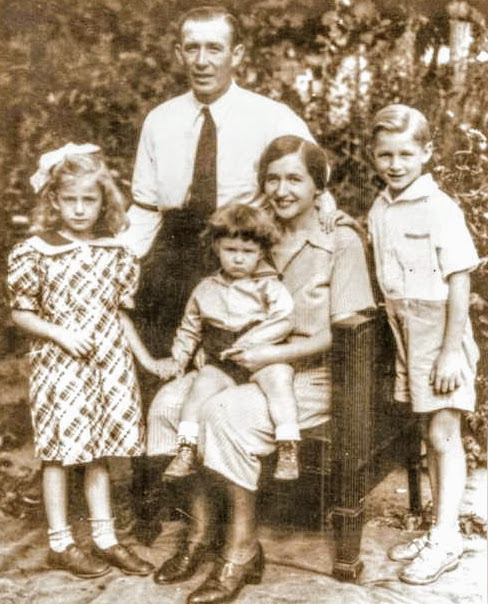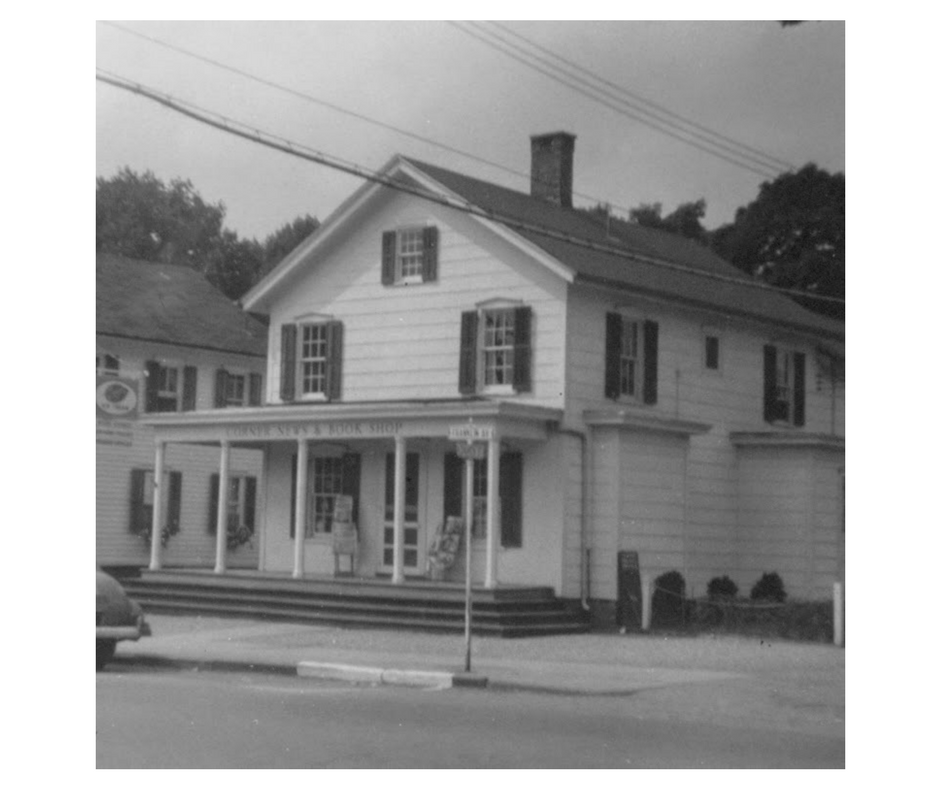
Ernest Kading
Portrait of a German Immigrant
written by Jay Russell
Ernest Kading was born on May 11, 1902, in Blumberg, Germany.
He was the tenth child of Louise and Johann Kading.
Early Schooling
Ernest spent his early childhood in Gumbinnnen attending school at the Gumbinnnen elementary.
He started school when he was 6 years old and continued through school until he was 14 years old.
During those eight years, he learned just the basic educational skills such as a reading, writing, and arithmetic.
Formal Education or Trade Education
As was the custom in Germany at this time after a child completed those eight years of schooling he could either continue with more formal education or develop a trade.
He chooses to learn a trade and decided to become a machinist.
He attended the Vereinigte Maschinenfabriken for a total of three years before he graduated with honours in 1921.
The first two years there was mainly conducted in the classroom working and studying form a number of books.
Last year he worked as an apprentice at the school.
Working After Graduation
After Ernest finished his schooling he worked approximately three years in various machine factories throughout Germany.
In 1924 he got a job at one of Germany’s largest manufacturing plants The Deutsche Weke.
There his job was to go to the customer’s place of business or farm and set up or put together the product they purchased.

Moving to America
Ernest was laid off from the Deutsche Were in 1925 and after being unemployed for about a half a year decided to move to America.
His sister, Henrietta and brother-in-law, Herman had moved to America a few years earlier and told him of the great opportunities in America.
In order for an immigrant to come over to America, a sponsor had to be able to support the person.
Ernest was sponsored by Herman Ramnitz.
On July 25, 1925, Ernest sailed on a ship to America leaving behind his fiancee Charlotte.
The voyage took about seven days.
There were approximately 200 passengers aboard the ship named Hamburg.

Arriving in America
The ship docked in New York City and there Herman was waiting for him.
After passing custom inspection they took the train to Wingdale, New York where Herman owned a small farm.
Ernest worked on Herman’s farm for a year getting little pay mainly his room and board.
Having established himself in the United States he then sent for his fiancee Charlotte Pusch who he became engaged to while still in Germany.

Charlotte Arrives in America
On April 18, 1927, Charlotte arrived in New York City.
As soon as Charlotte arrived Ernest and her were required to get married according to Immigration rules before he could take her off the ship.
Ernest and Charlotte went to the office of the Manhattan City Clerk.
There they were married by J.J. McCormick, Deputy City Clerk of Manhattan, New York with two strangers as witnesses.
Second Wedding
They then went back to Herman’s farm where they lived in one room of Herman’s small farmhouse.
On May 8, 1927, they had another wedding in the Wingdale Methodist Church because they wanted to have a formal church wedding.
Henrietta, Herman and ten other guests attended the wedding.
They stayed at Herman’s place about a year.
With the money Charlotte brought from Germany, they purchased a second-hand car.
First Apartment to First Child
With transportation, they moved out of Wingdale and into an apartment house in Dover Plains, New York in search of work.
Ernest got a job at the Lime Kiln as a machine repairman.
He worked there for five years until the Lime Kiln closed down.
While in Dover Plains they had two children.
John born on May 28, 1928, and Helen on April 15, 1930.
He also applied for United States citizenship which he received on May 13, 1933.
Depression-work?
This being the depression years, work was scarce and Ernest next job was as a bricklayer construction the Harlem Valley State Hospital located in Wingdale, New York.
He only worked there a few months because the work was too strenuous for him.
Thorndale Estate, Millbrook, New York
Ernest heard from a friend about a tractor man job opening in Thorndale Estate in Millbrook, New York.
He inquired and was hired by Mr. Oakleigh Thorne in April of 1933.
Thorndale at this time was making the transition from horsepower to the tractor and other machinery to do the farm work.
So it was necessary that they hire someone with the knowledge of machinery.
The 1000 acre Thorndale Estate was split up into three sections; the garden, the farm, and the stable.
The formal gardens were managed by Mrs. Oakleigh Thorne and were considered to be one of the loveliest in the country.
She planned and planted these in the early 20th century and they have since matured and continue to enhance the beauty of their classic 1839 42 room mansion.
Employed at the gardens were twenty-one workers.
The cattle farm was managed by Mr. Oakleigh Thorne and it raised and bred high-quality black Aberdeen Angus cattle imported from Scotland.
There were eighteen employed in this branch of Thorndale.
The third section of Thorndale was the horse stables which was run by Mrs. Margaret Thorne Marshall on of the Thorne’s daughters.
Here they employed three stable men who cared for 20 to 30 standardbred racehorses.
Also employed on Thorndale at this time were two chauffeurs and maids in the big house.
Ernest work day started at 7 a.m. and ended at 5 p.m.
His job consisted of feeding and caring for the cattle, planting and harvesting the crops.
He also was in charge of repairing the different farm machinery and making sure it was in running order.
Ernest got paid $65 a month; plus his house and two quarts of milk.
The reason he got two quarts was that at this time he had two children and he got a quart for every child.
Birth of 3rd Child
On May 3, 1934, his third child Henry was born.
He then got three quarts of milk a day.
Although Charlotte had to take care of the young children she too worked.
She fed three meals a day to three men who worked in the stables.
For this, she received $120 a month.
A Cow, Garden, Rabbits and Chickens
Years later they purchased their own cow with money they borrowed from Mr. Thorne.
Whenever Ernest was busy, the job of milking the cow was done by Charlotte or the kids.
They also had their own garden where they grew vegetables for table use and canning.
The children raised rabbits and chickens and sold the eggs to make a little money for themselves.
John the oldest son also worked on Thorndale when he was around 12 years old.
His salary for working during his summer vacation was a $25 savings bond.
Cash or Credit?
Ernest was the type of the who didn’t believe in credit.
If he couldn’t pay cash for something he usually went without it.
Although when it came to groceries he was forced to use a charge account.
He charged the groceries all month and paid for them on the first of the month when he got paid.
Usually, by the time they paid the bill for last month, there would be very little left for this month so they usually charged food all over again.
Charlotte’s Sewing Machine
When Charlotte lived in Germany she worked as an apprentice for a tailor to learn her trade.
When she came to America she put her talents to work with her sewing machine which she bought soon after arriving here.
The first thing she made was a pair of pants and a jacket for her husband.
She also made all of the children’s clothes because they couldn’t afford to buy them.
A Social Life?
The Kading’s had a very limited social life.
Charlotte rarely went out except to church on Sunday with the rest of the family.
On Saturday evenings Ernest would go with his German friends to Poughkeepsie to socialize and play cards with friends located there.
Sometimes the kids would go along and window shop on Main Street while waiting for their father.
German Spies
During the years of the World War 11, German people were carefully watched in fear that they could possibly be spies.
One day some FBI agents visited Thorndale to check the German people living there.
It just so happened that when they checked the Kading house they found a short-wave radio and a camera.
The agent threatened to smash the camera and take Charlotte to jail.
But Ernest convinced them that the camera belonged to his, John and that his wife, Charlotte was not a healthy woman.
So in fear that she would be more of a burden to them they did not take her away.
Leaving Thorndale
In 1965 Ernest left his position of Farm Superintendent on Thorndale because he was getting old and worried about receiving enough Social Security benefits when he became eligible.
His salary on Thorndale was $325 a month.
He then moved to an apartment on top of his son’s store, The Corner News Store and was located on Franklin Avenue, Millbrook, New York.
New Job
He then got a job as a janitor at Millbrook Central School.
He worked there for two years until his retirement on February 13, 1967.
After his retirement, he kept busy doing odd jobs such as school crossing guard, helping John at the store, and helping Henry at the Eberhard farm in Verbank, New York.
Massive Heart Attack
Ernest died while working at the age of 68 on August 14, 1970, of a massive heart attack.
This seems quite an appropriate way since he worked hard all his life and it wouldn’t seem fitting for him to have died any other way.
He left behind his wife, Charlotte, three children, John, Helen, Henry and eleven grandchildren which he was extremely fond of.
This was the portrait of my grandfather, Ernest Kading.
